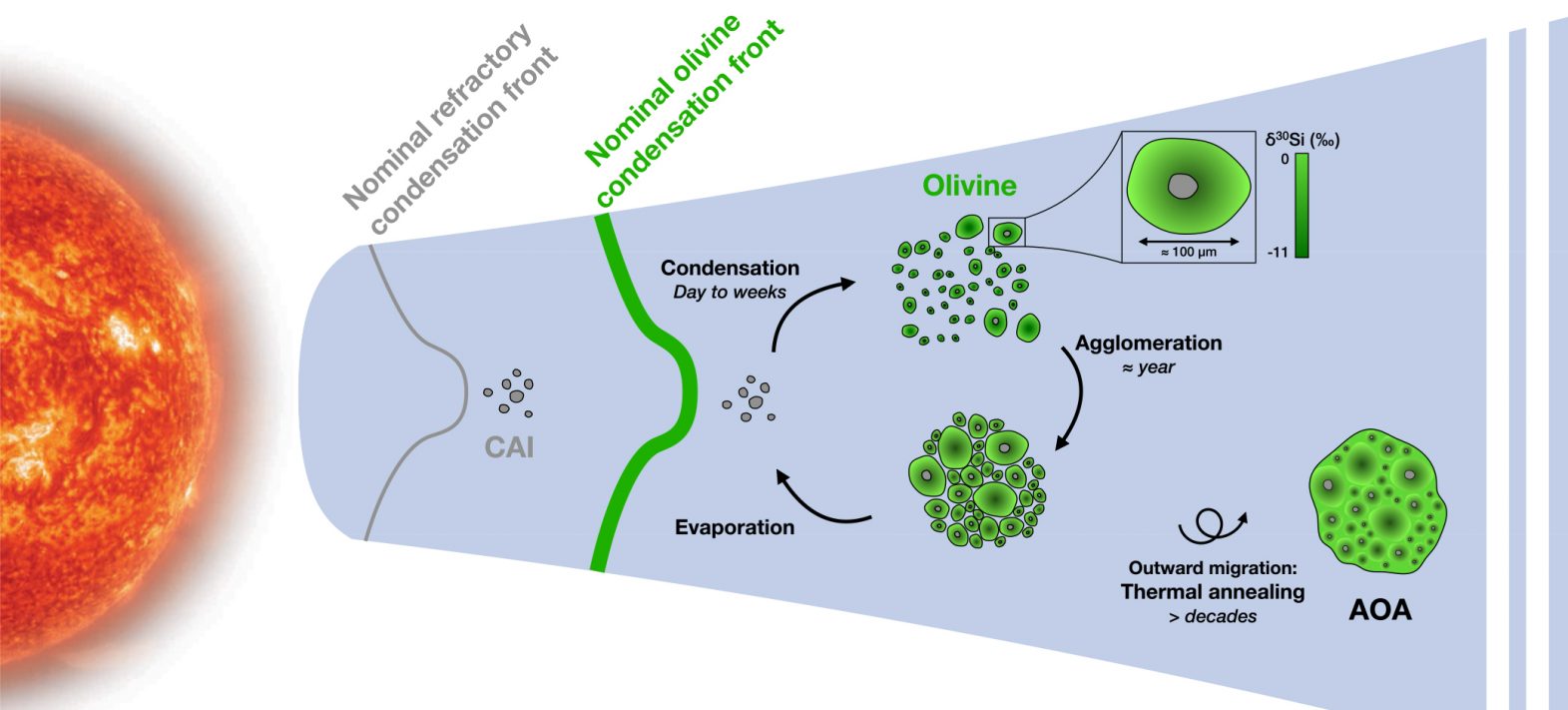The first solar system solids created in less than a week
A team of researchers from the Centre de recherches pétrographiques et géochimiques (CRPG/CNRS/Université de Lorraine), the Institut de minéralogie, de physique des matériaux et de cosmochimie (IMPMC/CNRS/MNHN) and the Institut de physique du globe de Paris (IPGP/Université de Paris/CNRS) reveal in a study published in the journal Proceedings of the National Academy of Sciences that the first solids in the Solar System probably formed in less than six days.

Publication date: 12/11/2019
Press, Research
Related teams :
Cosmochemistry, Astrophysics and Experimental Geophysics (CAGE)
Related themes : Origins








